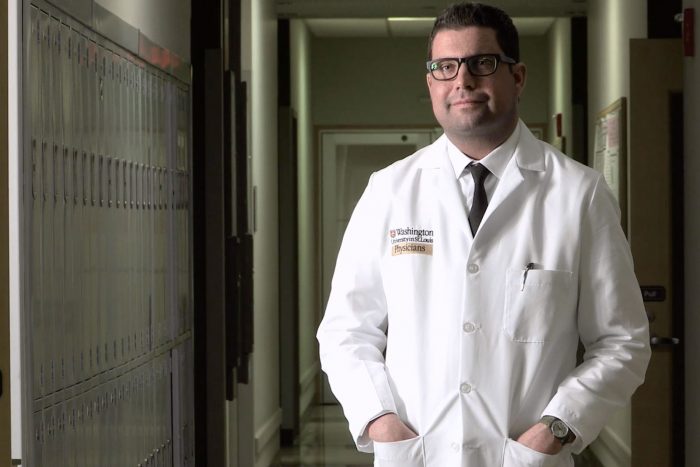Treatment for doctor with leukemia points to personalized medicine
Using advanced sequencing and analysis technology, Washington University researchers have helped a colleague survive the cancer he studies
 The New York Times
The New York Times Lukas Wartman, MD, has been battling leukemia for a decade. He has been researching methods to treat the disease for nearly as long.
Now, cutting-edge genetic research at the Siteman Cancer Center and Washington University School of Medicine in St. Louis has given him new hope.
The young doctor was first diagnosed with adult acute lymphoblastic leukemia in 2003 during his last year of medical school at Washington University. His doctors treated the disease with chemotherapy, and he went into remission.
Prior to his diagnosis, Wartman had been interested in researching the treatment of blood cancers, but beating the disease gave him even more resolve to continue his research efforts.
New York Times Cancer Series
Genetic Gamble: New Approaches to Fighting Cancer
- Part One: In Treatment for Leukemia, Glimpses of the Future
Features Washington University - Part Two: A New Treatment’s Tantalizing Promise Brings Heartbreaking Ups and Downs
- Part Three: A Life-Death Predictor Adds to a Cancer’s Strain
Features Washington University
Wartman finished his residency and continued on into a fellowship at Washington University, serving in the lab of Timothy Ley, MD, the Lewis T. and Rosalind B. Apple Professor of Oncology in Medicine. However, it wasn’t long into his fellowship before Wartman began feeling poorly again.
Tests confirmed his leukemia had relapsed.
Intense chemotherapy again put the leukemia into remission. Wartman also received a bone marrow transplant from his younger brother.
This time the leukemia was held at bay for three years. But once again it came back, this time in mid-2011.
Wartman, now an instructor of medicine on the faculty at Washington University, knew the statistics for surviving one relapse. This time he would be facing a second relapse for which there were no statistics.
Advanced genetic research
That is where advanced genetic research at Siteman and Washington University’s Genome Institute came into play. Ley proposed sequencing the genes of Wartman’s cancer cells and normal cells. Researchers also analyzed his RNA.
By doing so, his treatment team discovered that a normal gene might be contributing to the growth of his cancer by producing mass amounts of a certain protein.
Fortunately, a drug once only used to treat a type of kidney cancer was able to inhibit the gene, and Wartman’s leukemia went back into remission for an unprecedented third time. No one knows exactly how his future will play out, but at this time innovation in genomics has given him an edge.
Wartman has since been able to continue his work in Ley’s lab.
“I think that his own experience with leukemia, of course, has served as a major motivation for wanting to get the answers,” Ley said during an interview before Wartman’s second relapse. “He has a passion unmatched by anybody who has ever worked in my lab for understanding the biology of leukemia and for rapidly taking results from what we find in the laboratory back to the clinic.”






